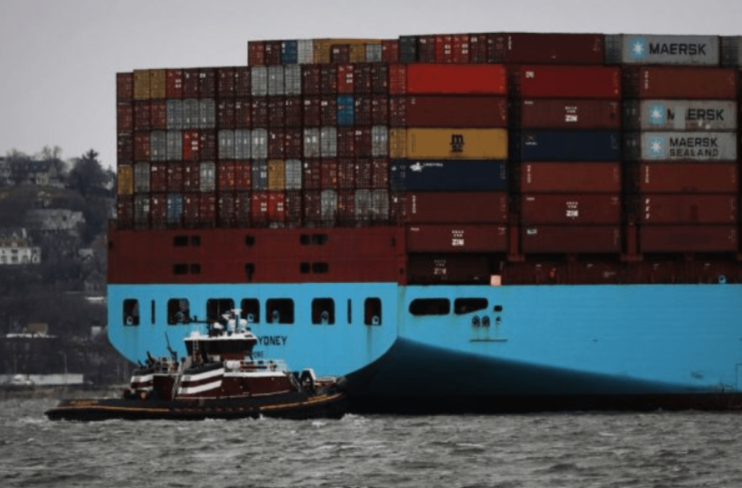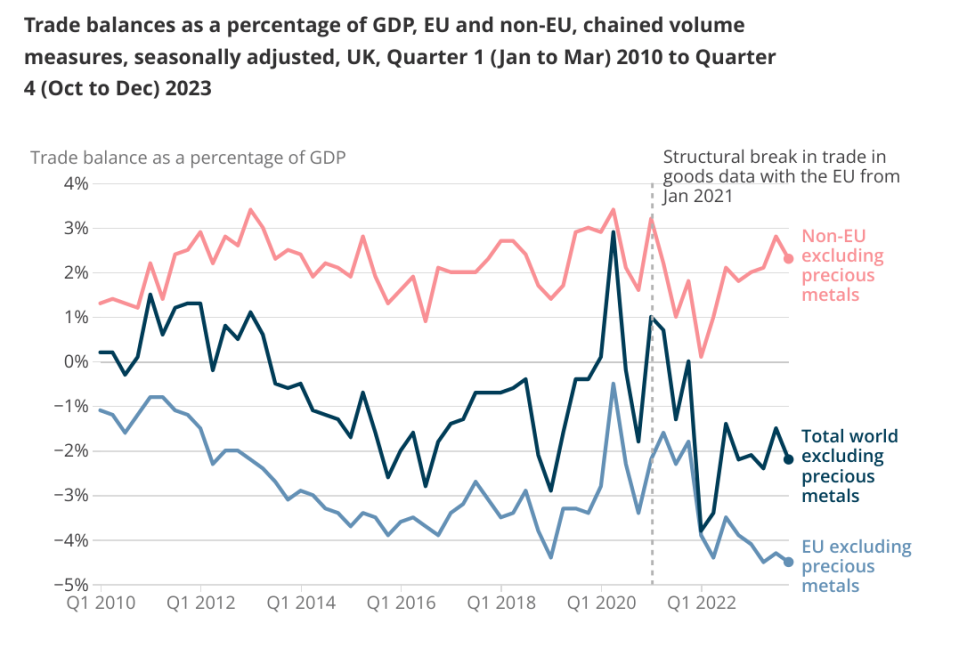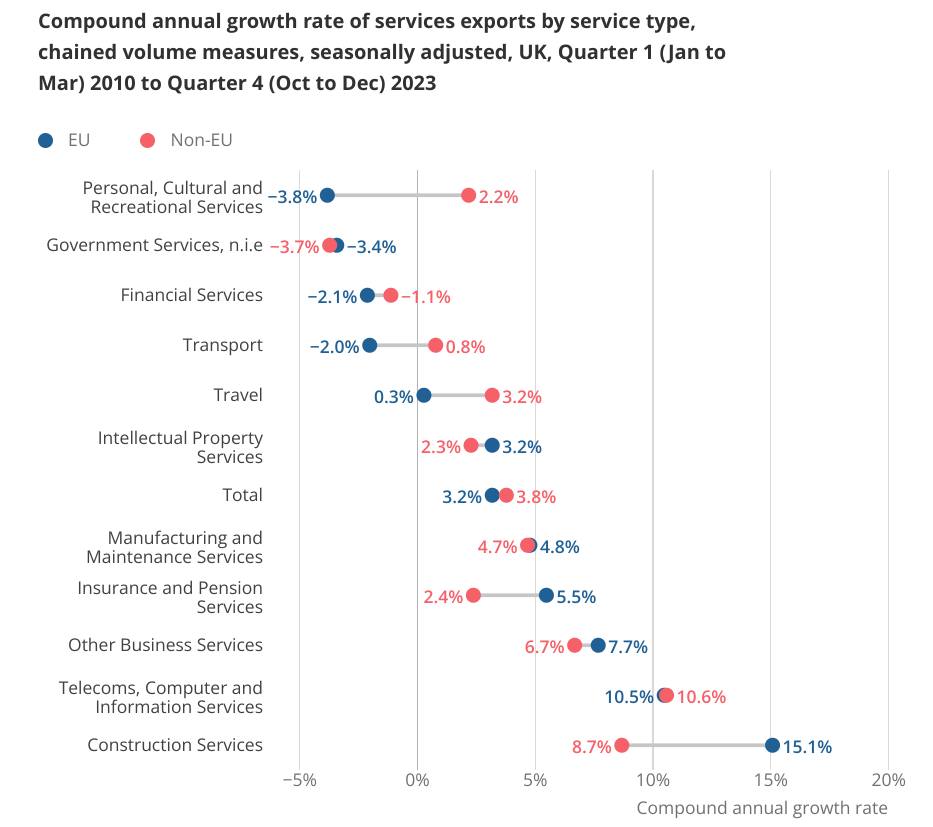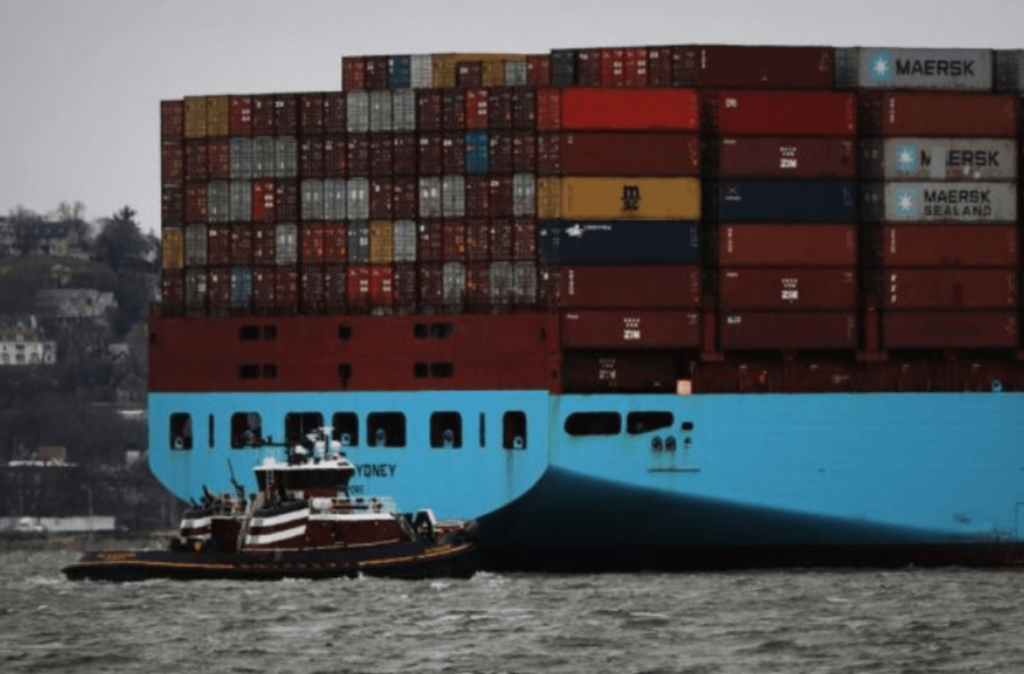
The UK’s balance of trade has deteriorated since 2010 despite striking growth in exports from its services sector, new analysis from the Office for National Statistics (ONS) show.
The UK’s trade balance – a measurement of how much the UK exports versus how much it imports – has widened from 0.2 per cent of GDP in 2010 to -2.2 per cent in the final quarter of last year, meaning imports now comfortably outweigh exports.
The worsening aggregate picture comes from a widening trade deficit with the EU, which has fallen from -1.1 per cent of GDP in 2010 to -4.5 per cent at the end of last year.
Weakness in goods exports has been the primary factor behind the worsening EU trade balance. Since 2010 only one type of goods exports – machinery & transport equipment – has seen the value of exports grow with the EU.
“After narrowing markedly during the pandemic period, the UK’s trade deficit with the EU appears to have resumed its previous pattern of gradual widening seen over the previous decade,” the ONS said.

In contrast the UK has consistently run a trade surplus with non-EU countries, with services exports more than double the level of imports.
Although the overall trade picture has worsened for the UK, exports from its services sector have performed well – growing by 3.8 per cent a year between 2010 and 2019.
The majority of service types have increased exports to both the EU and non-EU countries since 2010, with the biggest gains coming from construction services, telecoms and computer and information services.

The majority of services types record positive annual growth since the first quarter of 2010, with only transport, financial services and government services seeing a fall over that period.
United Nations Figures out earlier this month showed that strength in services helped the UK to become the world’s fourth largest exporter.
It comes after the UK ranked seventh in 2021, moving up three places in the figures for exporting goods and services in 2022.




